|
Batteries
Delcotrons
Heated Windshield
Heavy Duty
Horns
Ignition
Magnequench
MISAR
Missile Battery
Propulsion Systems for Electric Vehicles
Regulators
Shock Absorbers
Starters Switches
Remy Brother Patents
Products
Propulsion Systems for
Electric Vehicles
Brochures courtesy of Mel Hallman
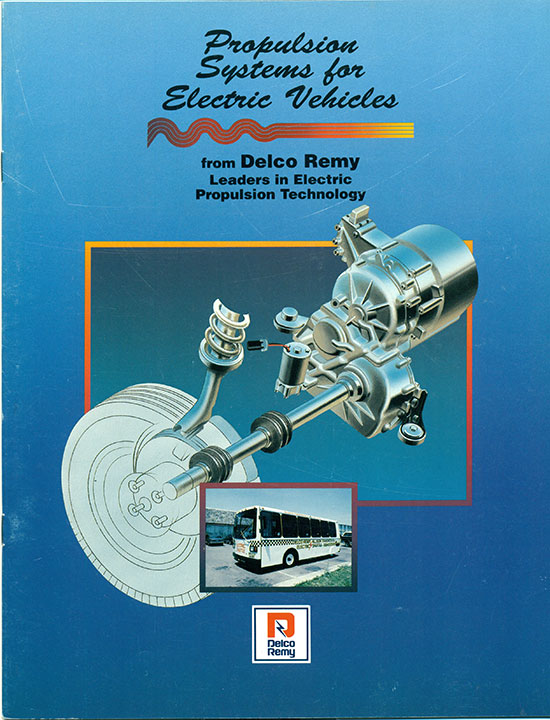
I was unaware until Mel Hallman brought this information over to me that
Delco-Remy had actually formed a product line to provide Electric
Vehicle Propulsion. I did know there was a lot of work being done
on this down at Plant 39 in Indianapolis as part of the GM Impact/EV1
program but was unaware it was formalized into a product line.
Before we show more of the literature here
is some background on electric vehicles and Delco-Remy's involvement in
it over the years.
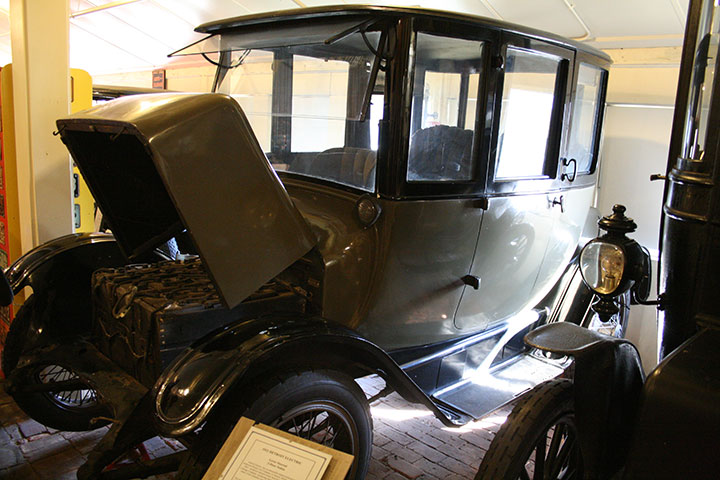
Many people think that electric cars are
something new in the auto industry with all of the hype they have been
getting the past few years. However, electric cars have been
around for over 100 years and at the start of the 20th century there
were many makes and models. They were a very logical choice in
that the internal combustion engine vehicles were still in their infancy
and until 1912 had one big drawback, which was the hand crank starter.
Many women preferred the electric car rather than have to try and hand
crank an auto with a hand crank, and the electric car companies targeted
women for this reason. While there were many attempts to replace
the hand crank with different self starting method, it was Charles
Kettering who developed the self starter we know today and that was
manufactured by DR for many years that was the beginning of the end of
the first round of electric vehicles. With the introduction of the
Kettering starter on Cadillac's in 1912 the internal combustion engine
started to gain supremacy.
Pictured above is a two passenger 1921
Detroit Electric with lever steering. Range was 80 miles at a top
speed of 20 miles per hour and cost up to $3,500 in 1921 which is
$45,000 today. The photo was taken at the Wayne County Historical
Museum in Richmond, IN.
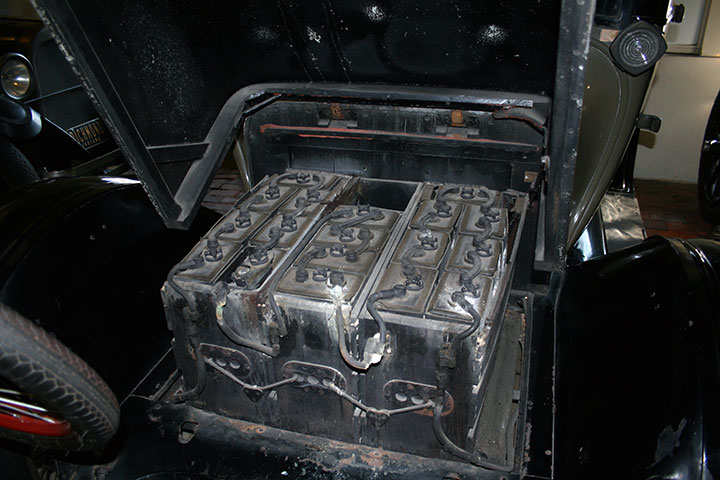
The lead acid battery pack.
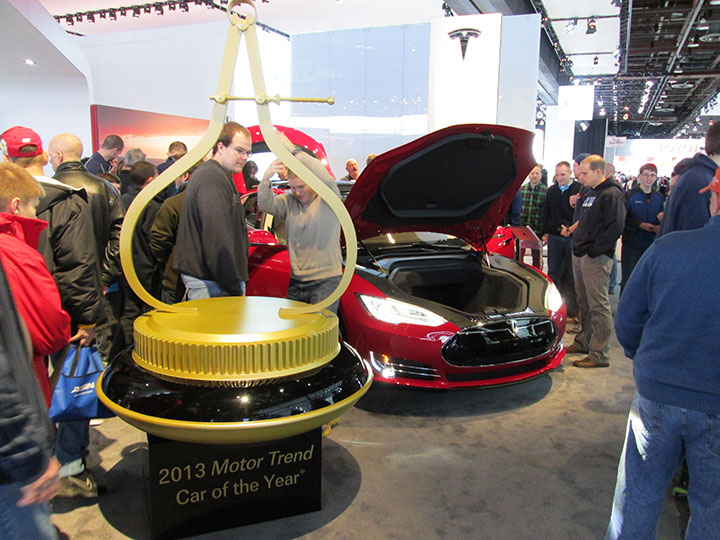
Fast forward to 2013 and the Tesla Model S,
Motor Trend Car of the Year. A modern version of the all
electric motor car.
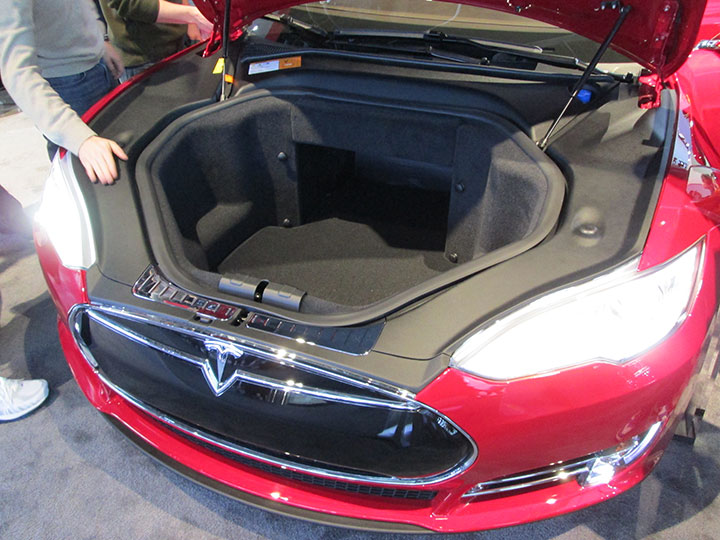
No batteries visible here in the front.
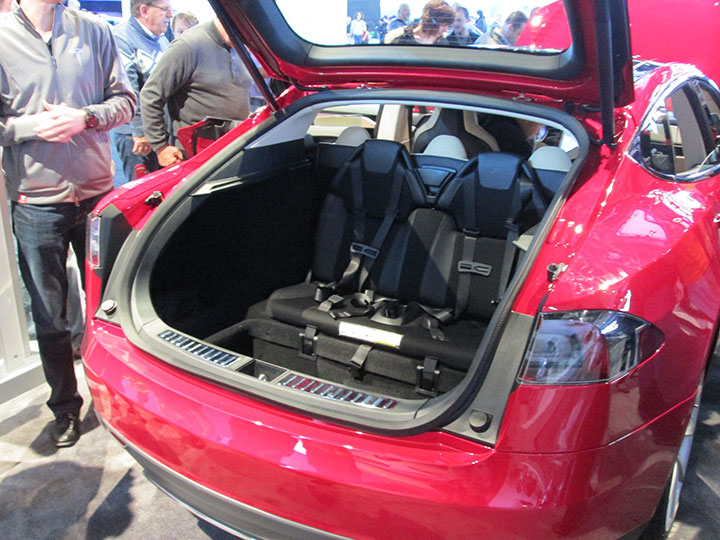
No visible batteries in the back either.
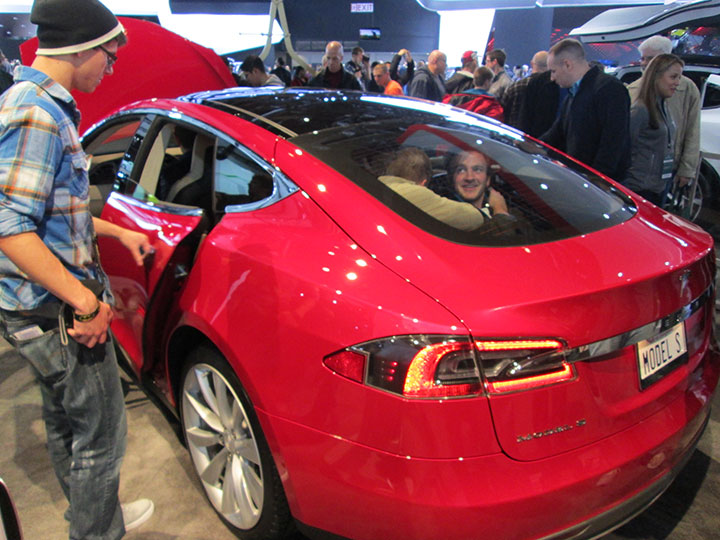
These photos were taken at the North
American Auto Show in Detroit in January 2013. Unfortunately with
all of the spectators around it this was the best photo of the entire
car I could get. Note that it is a four door with room for persons
less than five feet tall in the back (The subjects here were larger than
that!). There are four different versions of this depending on
battery capacity ranging in cost from $52,400 to $87,400. If we
look at the bottom model as it compares price wise with the 1921 Detroit
Electric we can seen in 90 years that the range has doubled to an
estimated range of 160 miles at 55 mph with a top speed of 110 mph.
In between these two points in electric car
technology and before 1994 when it ceased to exist as a division,
Delco-Remy was working on being able to provide both batteries and
motors for electric vehicles.
1966 - DR provided silver-zinc batteries for the GM Electrovair program which was a Chevrolet Monza electric vehicle.
DR participated in the GM Electro Van Program.
1969- DR participated in the GM512 "Shopper Car"
project by providing batteries and DC motors.
1978 - DR produced Nickel-Zinc
batteries for 18 Chevettes that were converted to electric drive.
Delco-Remy Investigative
Vehicle (Drive I) as documented in "The Moments in Time" page.
1979 - DR provided lead-acid batteries
for 20 full size electric powered GMC vans used by ATT in Culver City, CA
as a DOE project that ran until the early 1980's.
1990 - DR began work on the development of electric
propulsion drive systems. This would lead to the electric drives on
the ill fated GM EV-1 "Impact". The demise of the "Impact" was not
technical but due to corporate politics and lack of vision on electric
vehicles.
1994- Opened Lithium Polymer battery development center in
Indianapolis.
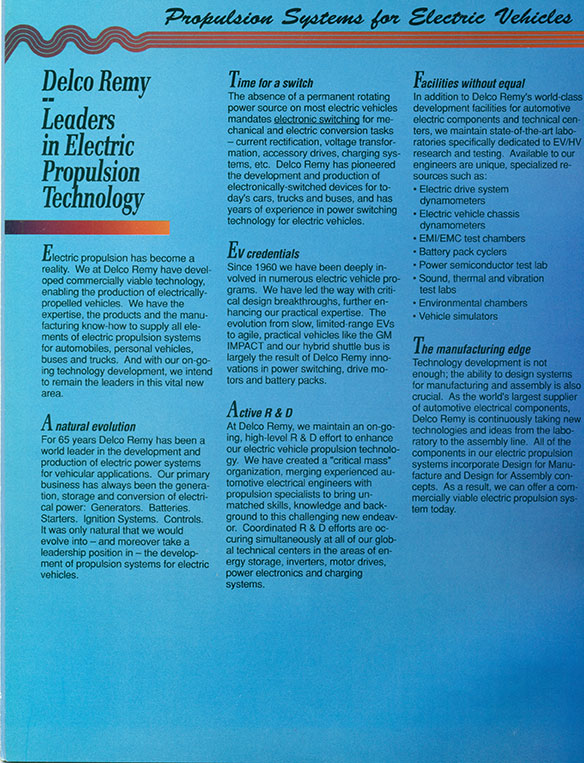
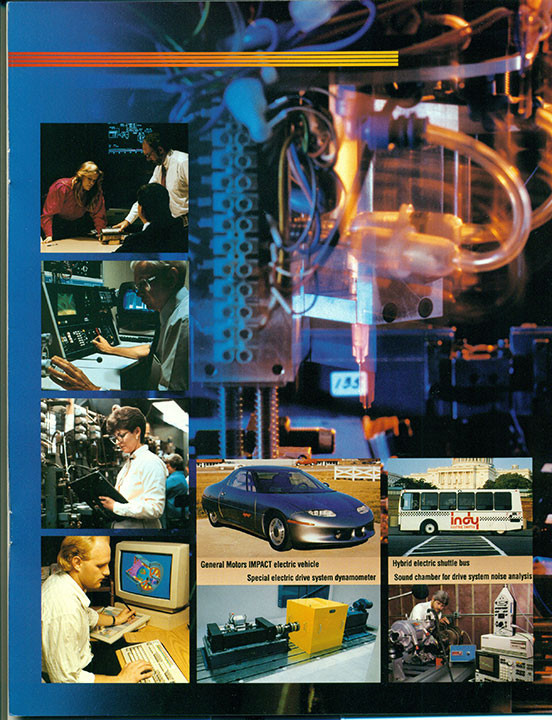
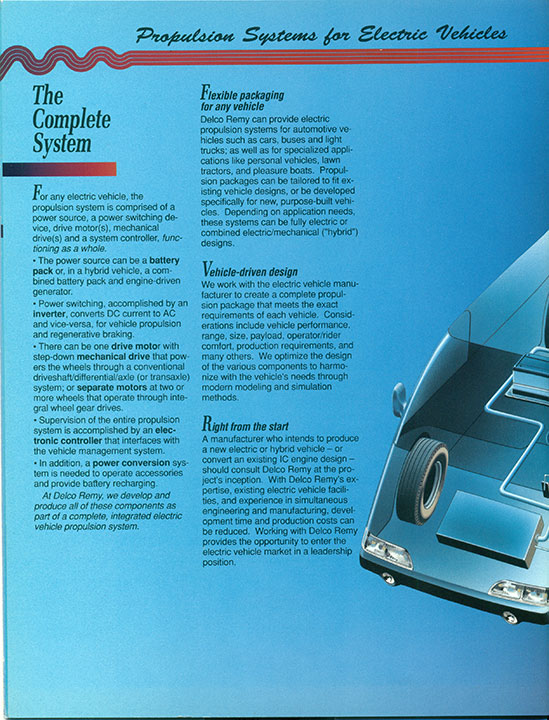
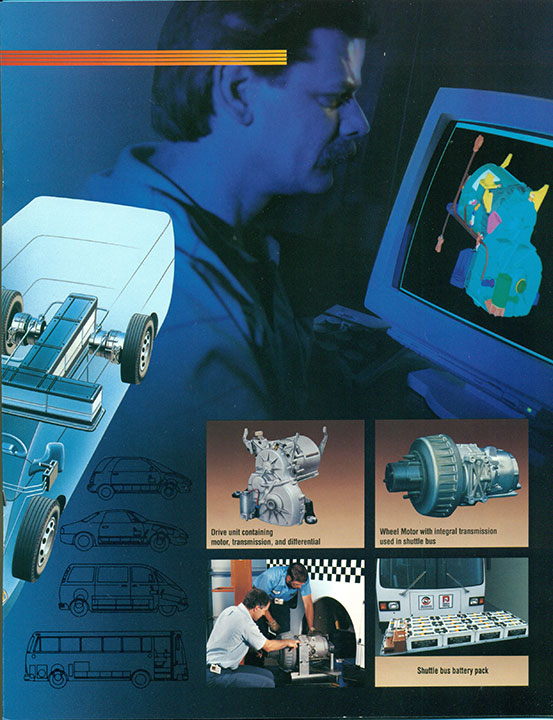
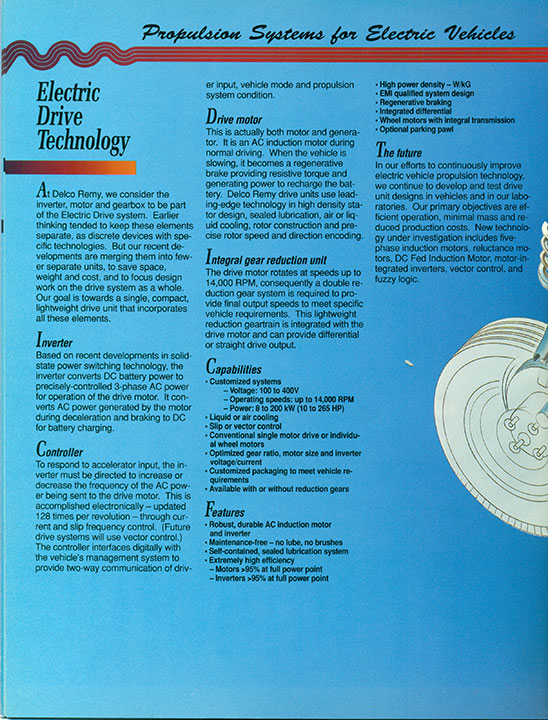
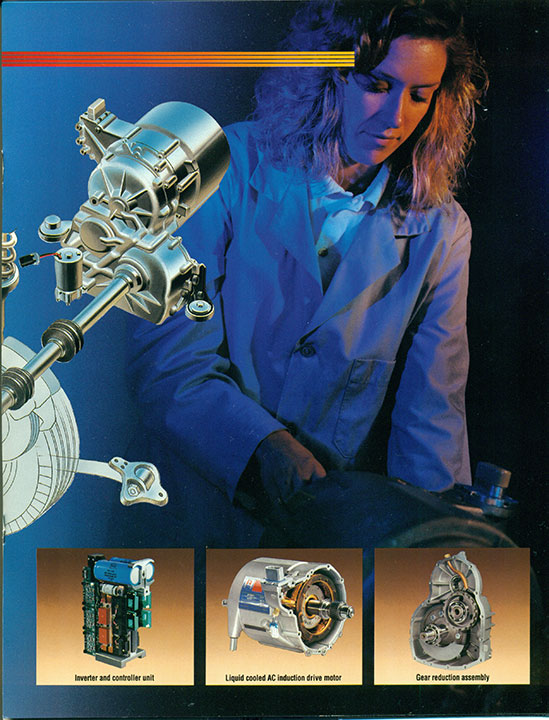
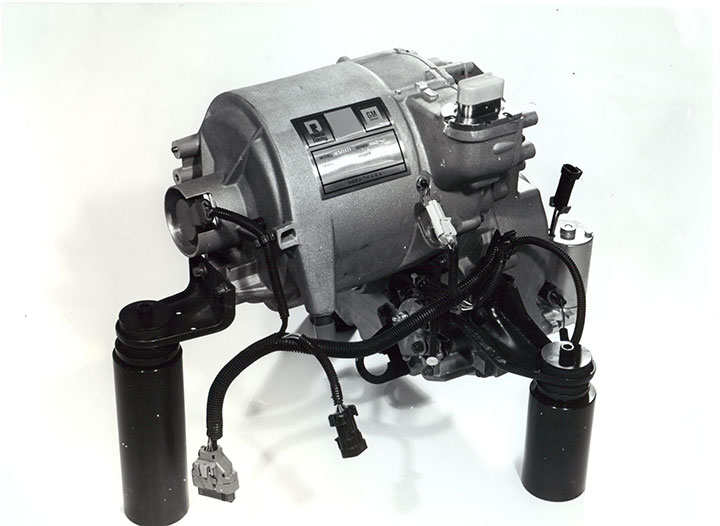
Gene Phillips Photo.
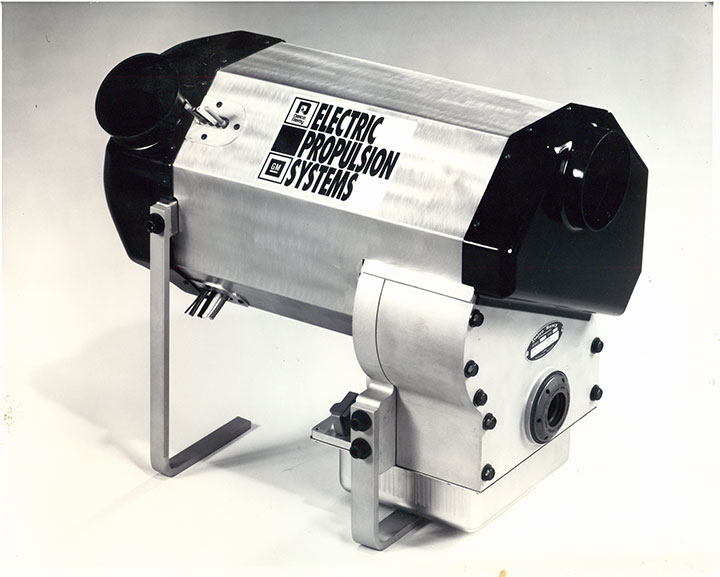
Gene Phillips Photo.
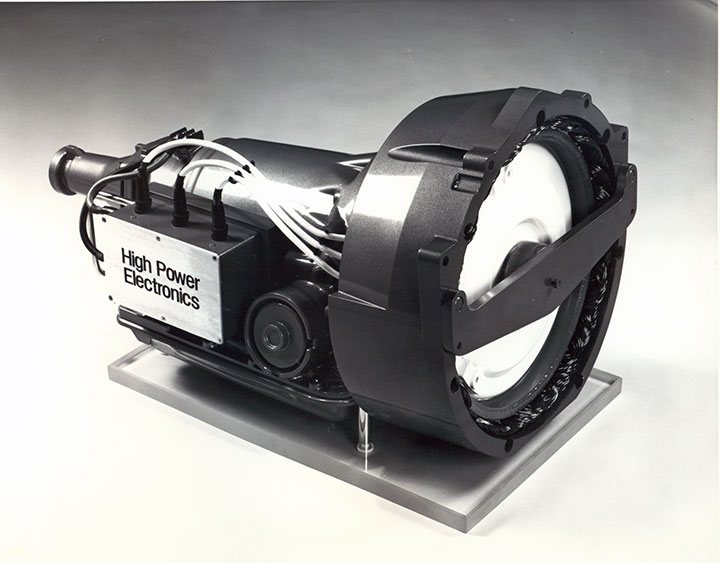
Gene Phillips Photo.
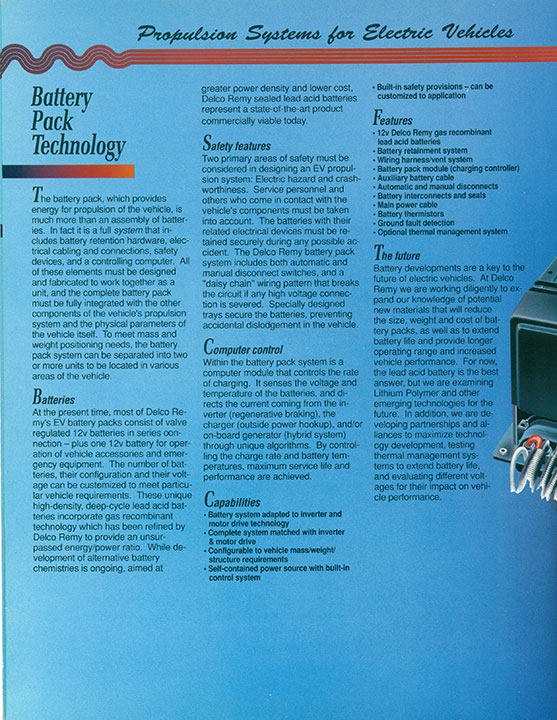
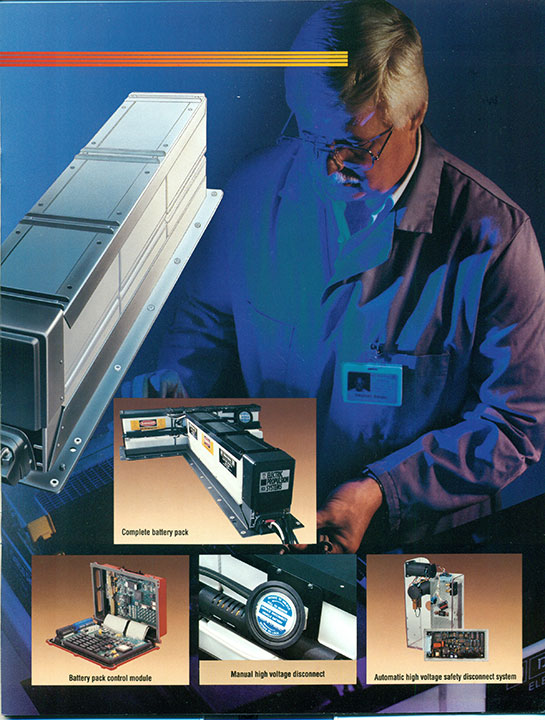
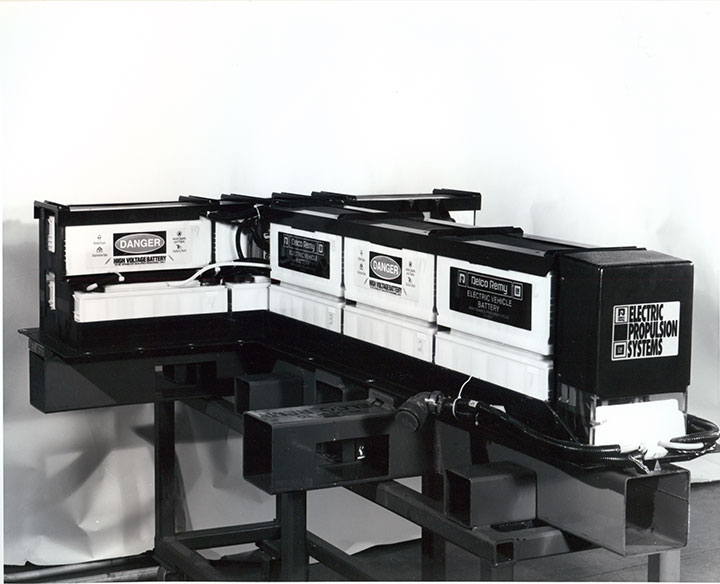
Gene Phillips Photo.
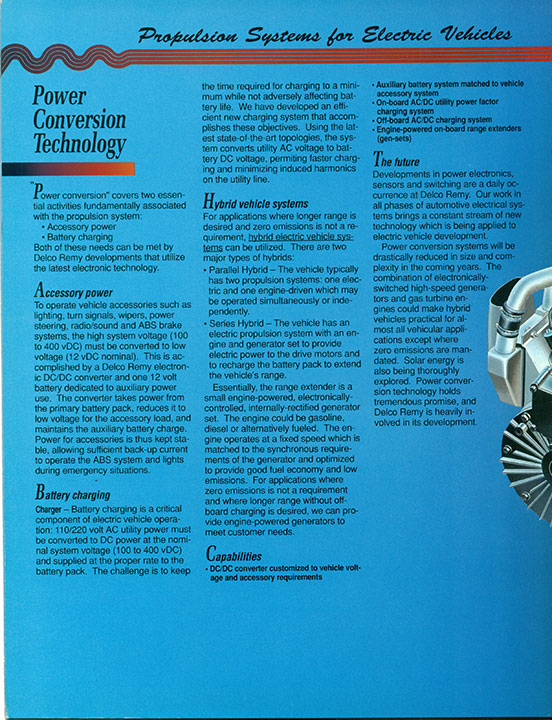
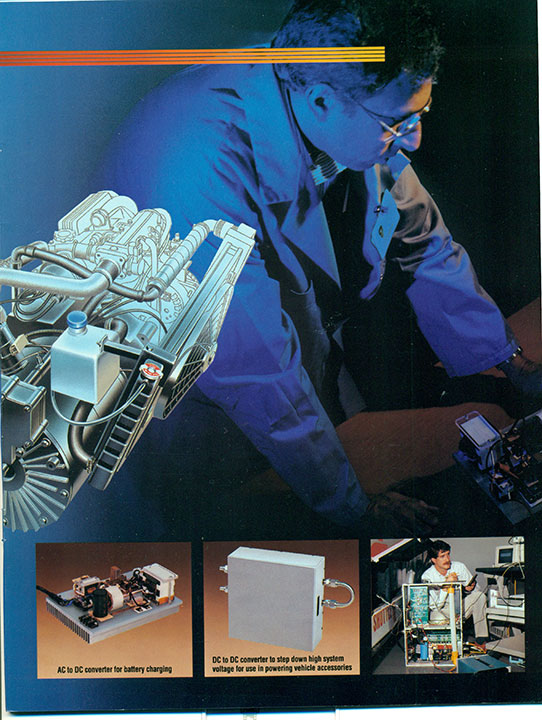
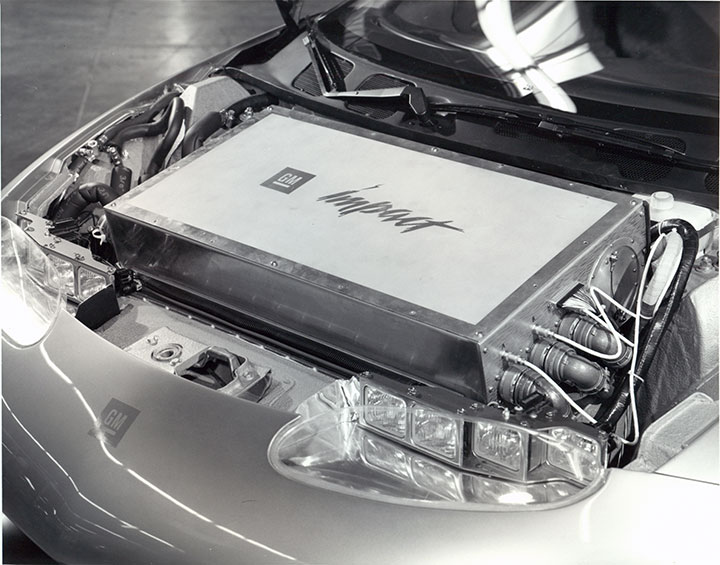
Gene Phillips Photo.
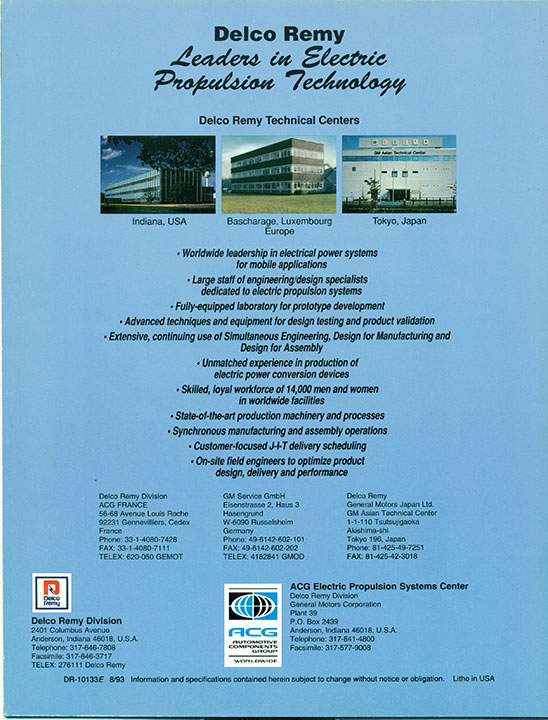
Note the August of 1993 date, 11 months
before the end of Delco-Remy as a division. Actually on this page
the ACG is taking credit for the Propulsions Systems. This was the
largest of the marketing brochures for propulsion systems and was all
inclusive as to what DR could do. Below the EV-1 are the covers of
three other brochures that contained subsets of the above depending on
the particular product specialization.
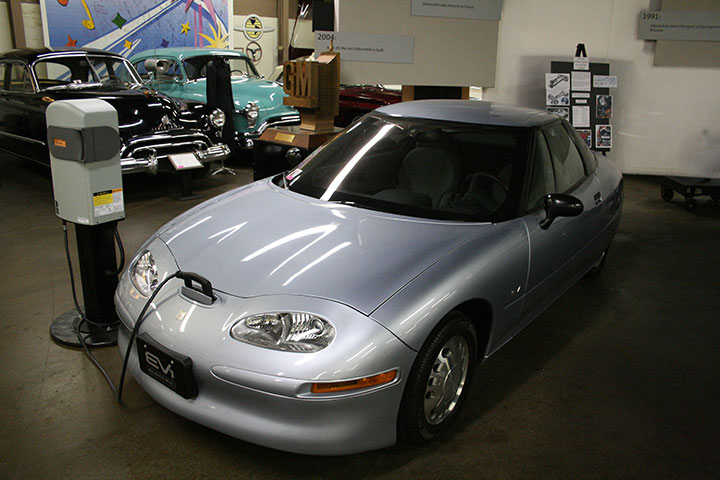
The GM EV-1, produced between 1996 and 1999
was the main product output of the Propulsion product line.
However, this was after Delco-Remy ceased to exist as a division and the
production came as under the control of the ACG and then Delphi. But the technology
was born in DR and implemented by its former employees under the name of
new divisions and companies. Photo taken by the author at the RE
Olds Museum in Lansing, MI.
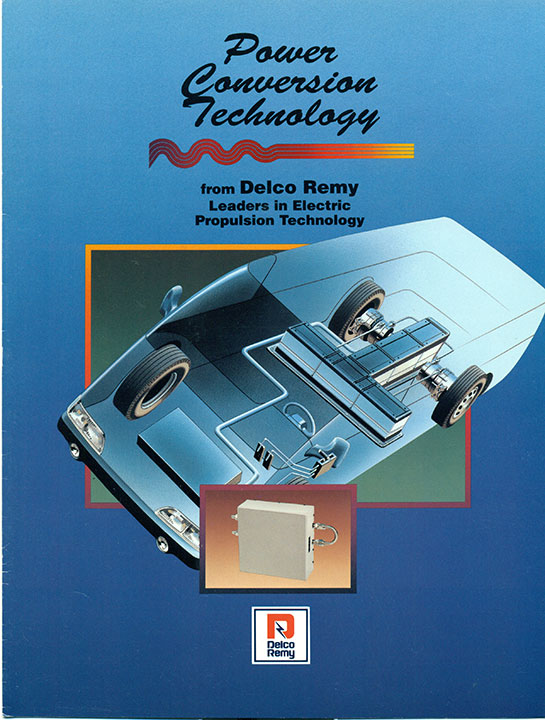
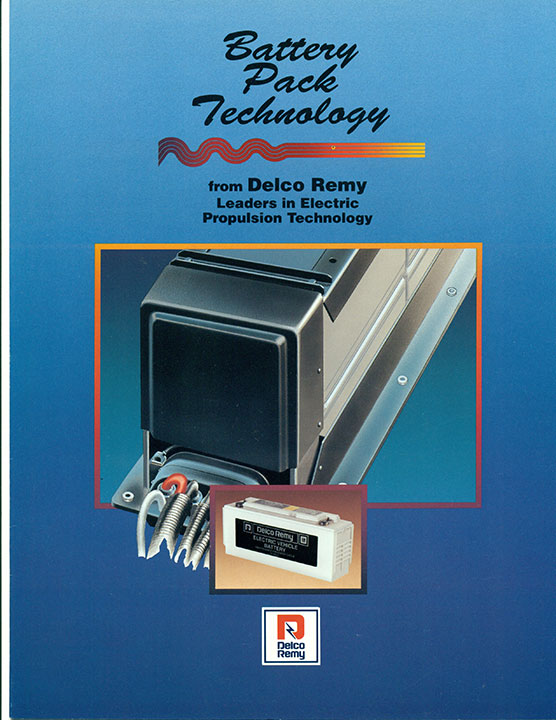
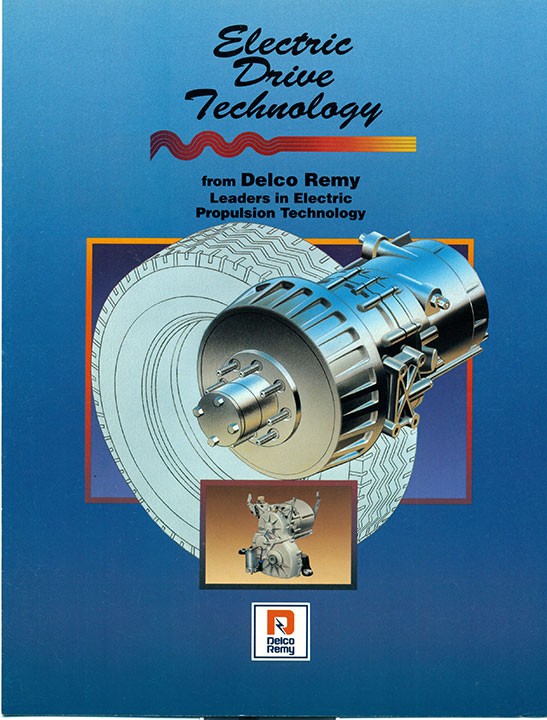
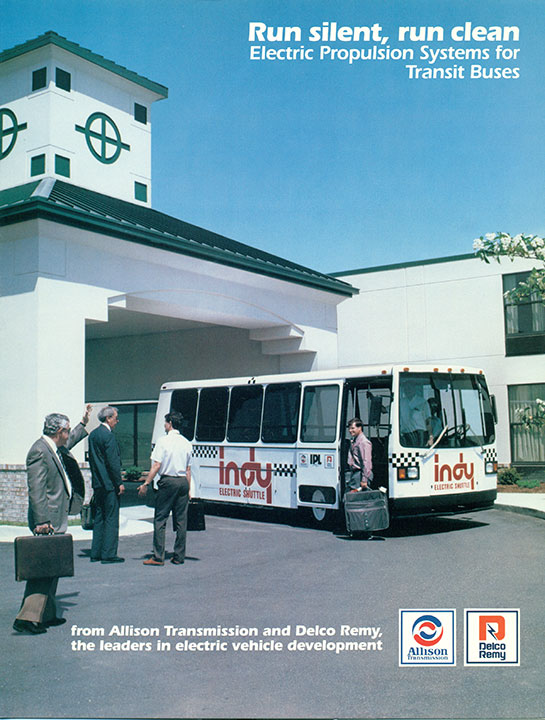
I am always amused that electrics claim to
be "clean". As there are no free lunches and energy is not free
the pollution is produced back up line by the power plants to generate
the electricity to charge the
batteries. Something even today the electric vehicles
mis-represent. Hopefully the general population has figured this
out but I doubt it.
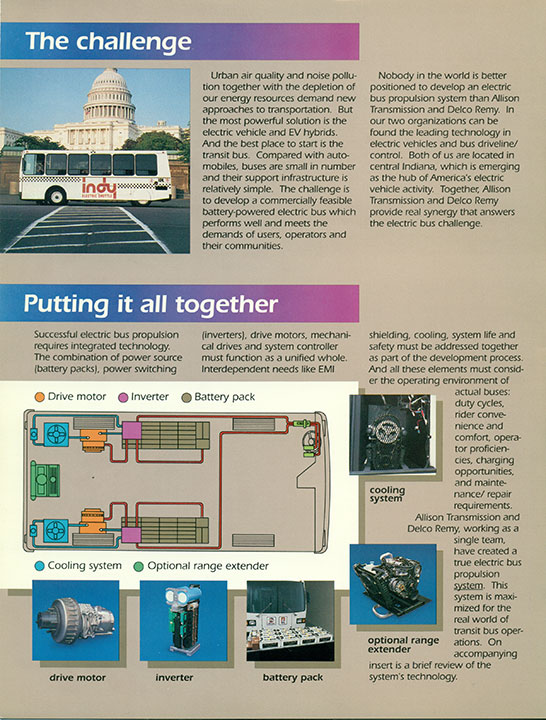

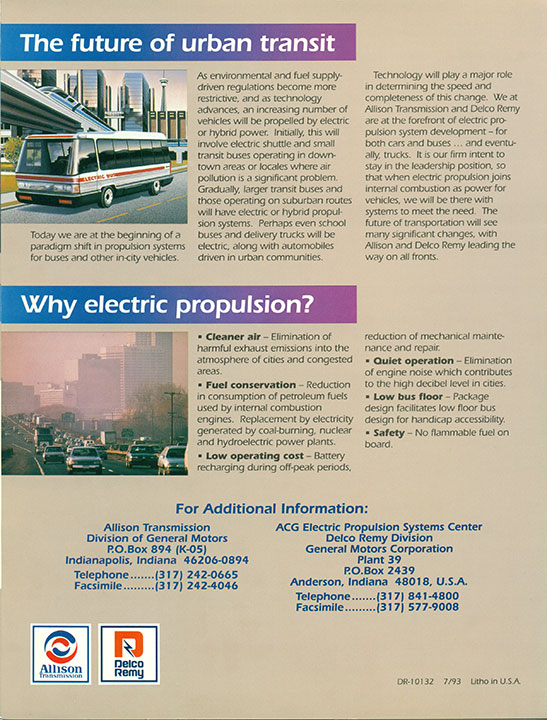
This was published July of 1993.




|


































